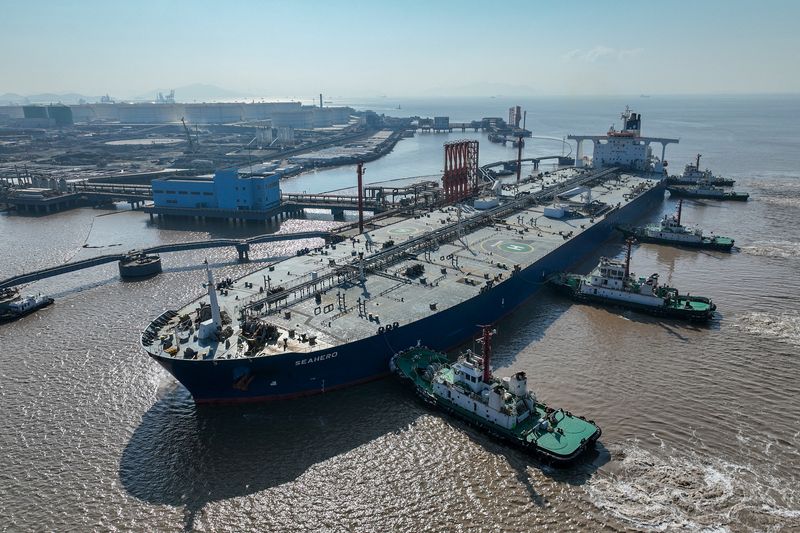By Clyde Russell
LAUNCESTON, Australia (Reuters) - "This time it's different" is a well-worn cliché that seems to be getting another whirl with the latest U.S. sanctions against Russia's crude oil exports.
Oil prices jumped in the wake of the new measures aimed at preventing Russia from shipping crude using a so-called "dark fleet" of tankers.
It does seem strange an industry which has been arguing since Russia's 2022 invasion of Ukraine that sanctions are largely ineffective, should suddenly switch to thinking the new steps are the real deal.
What's more likely is that the jump in prices since President Joe Biden's outgoing administration announced the sanctions against more than 160 tankers is temporary, lasting only as long as it takes to adjust supply chains.
Global benchmark Brent crude futures ended at $82.03 a barrel on Wednesday, the highest close since August last year, having gained 6.6% since Jan. 9, the day before the U.S. measures were announced. [O/R]
The rise has come amid media reports that refiners in India and China, the two biggest buyers of Russian crude, are scrambling to source alternative suppliers for deliveries from next month onwards.
The International Energy Agency said in a report on Wednesday the new sanctions cover entities that handled more than a third of Russian and Iranian crude exports in 2024.
It's likely there may be a short-term squeeze on oil prices as Indian refiners in particular seek cargoes from other suppliers, most likely those in the Middle East and Africa, whose crude is similar in quality to Russia's Urals grade.
But the oil market has shown itself to be quite adept at adjusting to any sanctions measures, and this will likely be the case again.
It's possible Russia's dark fleet will re-emerge in other forms, with new owners or greater use of ship-to-ship transfers.
It's also possible Moscow will reluctantly decide to offer more of its crude at the $60-a-barrel price cap imposed by Western countries, rather than sell far more limited volumes.
CHINA IMPORTS
There is another likely short-term scenario, and China could simply pare back its crude imports and dip into inventories.
China, the world's biggest crude oil importer, has a well-established pattern of trimming imports when its refiners take the view that prices have risen too high or too quickly.
Given the lag of up to two to three months between when cargoes are arranged and when they are delivered, this means China's crude imports may moderate from March onwards.
China is already expected to see only moderate growth in oil demand this year, with the Organization of the Petroleum Exporting Countries forecasting an increase of just 310,000 barrels per day in 2025.
It's certainly the case that China has enough oil in storage to meet some its demand.
By turning to inventories China can put downward pressure on prices while waiting to see if the new sanctions on Russian crude are a short-term issue or are indeed a game-changer.
There are also other factors at work which cloud the outlook for oil prices in the first half of the year.
U.S. President-elect Donald Trump wants to tighten sanctions on Iran, which would be bullish for oil prices.
He also wants to end the conflict between Russia and Ukraine, which would be bearish based on the assumption that Moscow would want sanctions relief as part of any deal.
Trump also wants U.S. producers to lift output, something that may well occur if oil prices do remain elevated on concern over the loss of Russian barrels.
Overall, the current rally in crude prices runs the risk of being more transient than much of the recent commentary suggests.

That said, there are still a myriad of reasons to be cautious over the direction of prices, with much hinging on what the Trump administration actually does once it takes the reins on Jan. 20.
The views expressed here are those of the author, a columnist for Reuters.